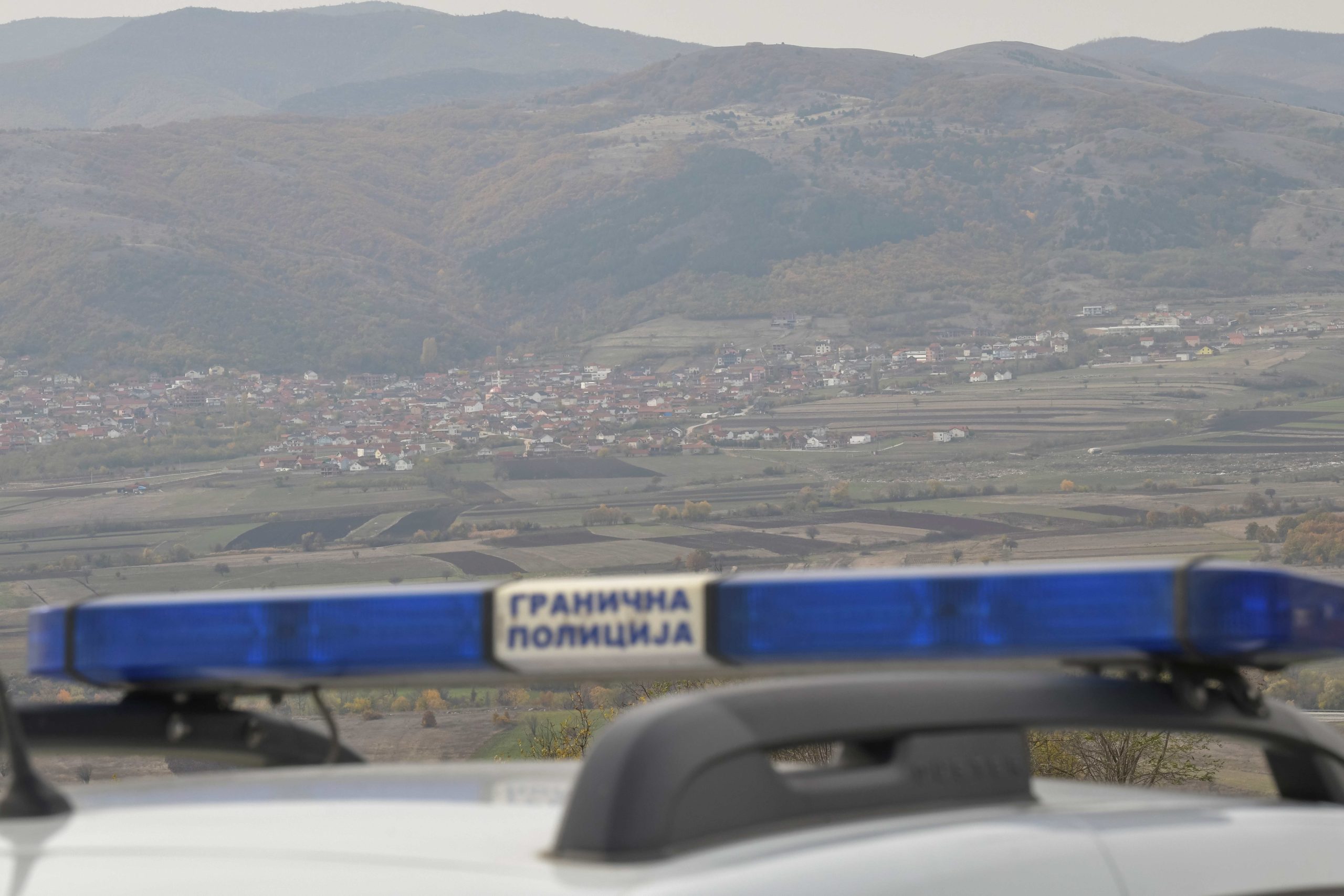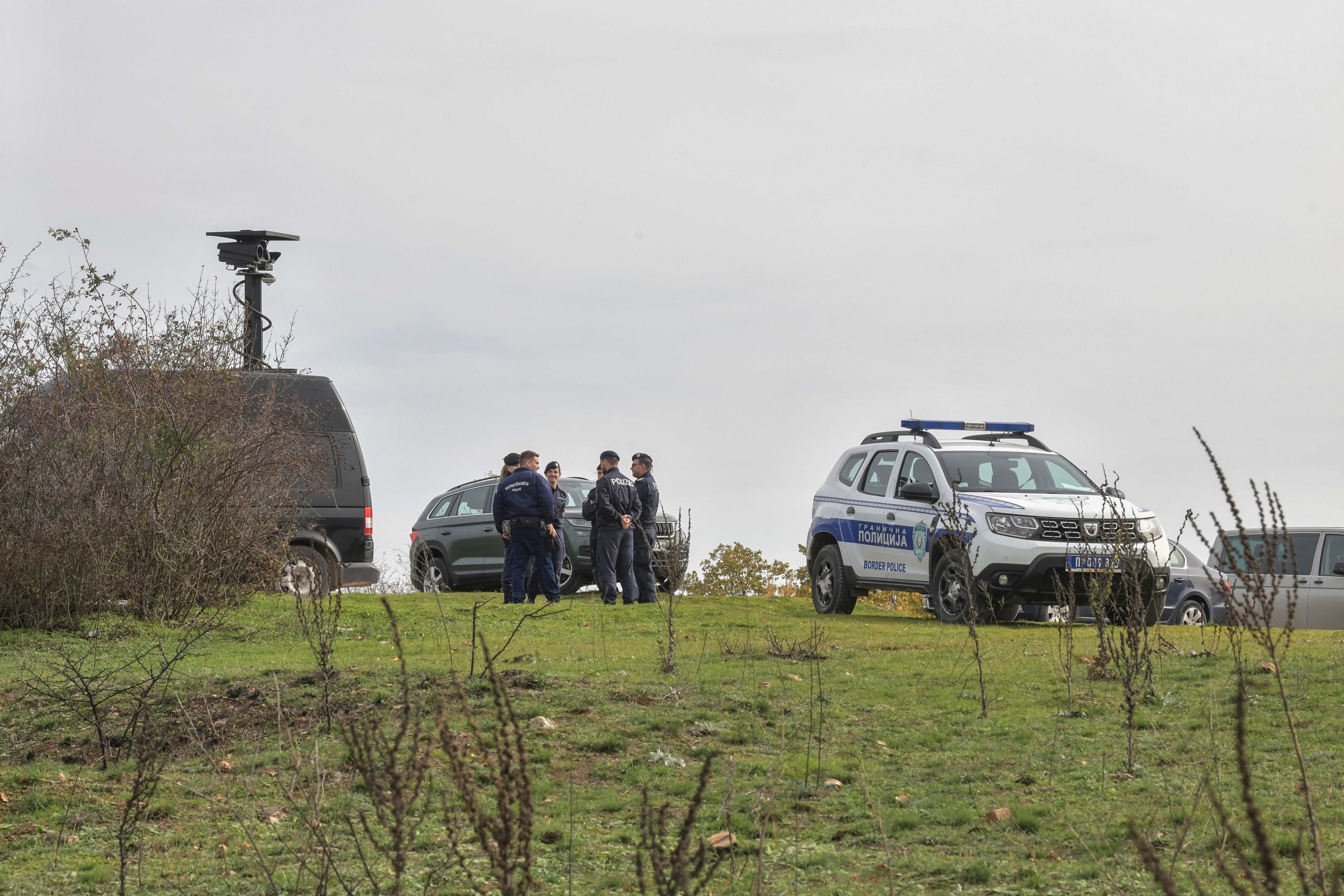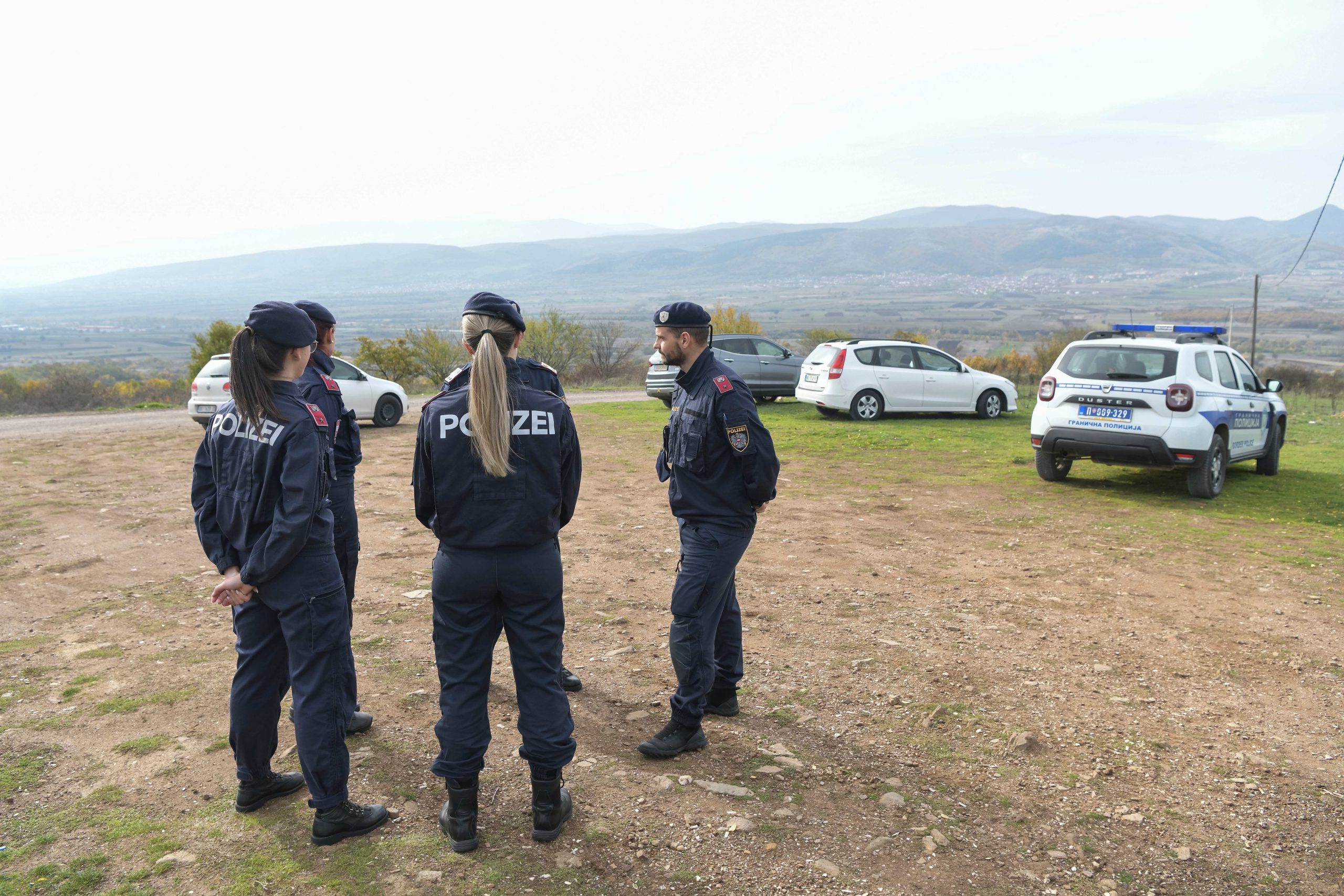The Western Balkan route, which migrants mostly use to reach the countries of the European Union (EU), with its branch that stretches across North Macedonia and Serbia near Preševo, passes through inaccessible, and in some parts, very harsh terrain.
At the top of one of the hills surrounding Preševo, covered only with fallen grass that is blown by the wind at times, there is a seemingly ordinary vehicle with the signs of the Border Police. The area around it, free of trees, and with only a few islands of low bushes, one would think, could be observed and controlled as in the palm of your hand, even with the naked eye. But, nothing is worse than that.
That very border zone is one of the neuralgic points of the migrant crisis, which, due to civil wars and regime changes in Asian and African countries, has forced more than a million people on a long, uncertain and, above all, dangerous journey that has taken them through Serbia, among other countries. That is why the vehicle on the hill, despite its usual appearance, is completely unusual. It is equipped with a powerful thermal imaging camera and monitor, the size and resolution of which even the most avid gamers can only dream of.
With a slight movement of the controller, the border policeman zooms in the seemingly lifeless ravine ten kilometres away, deeply penetrating the territory of North Macedonia with a powerful electronic eye. A light centring follows and the focused wasteland is suddenly filled with a group of whitish dots, some of which move slightly. Not far from them, a larger and slightly different coloured stain remains motionless.
“The importance of thermal imaging cameras is not only that they can preventively detect people who would irregularly want to cross the border long before they reach the border line, but also that they clearly distinguish between humans and animals”, says the operator and continues, “What you see is only a group of animals, most likely a flock of sheep, and this larger and differently coloured spot is a shepherd.”

Sophisticated equipment, such as thermal imaging cameras, was donated by the EU for the new challenges that Serbia faced when the migrant crisis began. Apart from donating equipment, EU support was also reflected in the training of members of the Border Police, the improvement of living and accommodation conditions for both police officers and migrants. This has not only improved the protection of the national interests of Serbia and the security of its border and citizens, but also the protection of the basic human rights of migrants who have found themselves in our country.
Migrants mostly use Serbia’s borders with Bulgaria and the Republic of North Macedonia for irregular crossings, so Serbia is assisted in controlling the border with Bulgaria by the European Border and Coast Guard Agency (Frontex), while the EU provides selfless assistance in border management in controlling the border with North Macedonia.
Assistant Chief of the Border Police Administration, Mr Radiša Ristović, points out that the Balkan route was most active in 2015, when more than a million migrants passed through it. The route used by people from different countries in Asia and Africa starts in Turkey and stretches through Greece, North Macedonia and Serbia, or another branch through Bulgaria and Serbia.
Ristović emphasises that the Border Police Administration pays special attention to the training of police officers regarding the treatment of irregular migrants, the victims of human trafficking and other vulnerable categories, especially unaccompanied children. All migrants, and especially vulnerable categories, such as unaccompanied minors, are provided with health care, education and social protection, which are provided with the EU funds.
If they find a migrant without documents, the officers of the Border Police Administration first determine the identity of the person and their age, but also the possible need for medical or other care, and inform the competent services. If the migrant requests asylum in accordance with the law, a certificate is issued and from that moment they are enabled to submit an asylum application and initiate the procedure for obtaining asylum.

If the irregular migrant does not have an identity document on the basis of which it is possible to establish identity, in addition to taking fingerprints and taking photographs, a check through the available databases follows.
It is often the case, it can be heard, that migrants have false documents, which, in itself, would not be unusual if the largest number of such personal documents as the date of birth did not record January 1. It is not clear whether migrants love the New Year so much because of the hope for a new beginning they hope for in new countries, far from the horror and chaos they fled. The reason may be a different calculation of time in Afghanistan.
Ristović points out that there were no complaints about the attitude of the Border Police towards irregular migrants and that Serbia was assessed as one of the most humane countries during and after the migrant crisis. The fact that the state border of Serbia is a total of 2,362 kilometres long and that there are 77 border crossings is perhaps the best indication of how complex the task of the Border Police is in preventing irregular migration. Ristović notes that parts of Serbia’s borders are partially blocked, but that it is not possible to completely physically prevent the crossing of irregular migrants.
The obstacles are actually several meters high wire fences that meander along the border line. Apart from showing the illogical demarcation in the most banal way possible because, for example, they pointlessly meander through the terrain equally deserted on both sides of the wire, these obstacles indicate a very gloomy reality – someone is ready to cross them for peace and freedom at the cost of serious injuries, unless they are shown a different path.
In tracing these different paths, irregular migrants are assisted by either smart phones equipped with not necessarily accurate maps or by cunning smugglers, guides who offer little chance of successful irregular border crossings for a disproportionately large amount of money.
Ristović adds that the EU has been supporting Serbia in the field of border management for years, and that the Agreement on Sectoral Reform for Integrated Border Management has contributed to the harmonisation of domestic laws and other regulations with the EU acquis. In that way, the recommendations from Chapter 24 of the accession negotiations between Serbia and the EU, which deals with the areas of justice, freedom and security, are being fulfilled. With this agreement, the EU supported Serbia with 28 million euros, of which 22.86 million euros was direct budget support.
Ristović emphasises that EU assistance in manpower and technology is extremely important because the increased number of police officers who came from the EU enables the formation of a larger number of patrols that can control most of the terrain, that is a longer part of the border is under constant surveillance that way.
Reminding that police work everywhere in the world has the same common goal, Ristović stated that the members of the border police, regardless of which European country they come from, understand each other very well, especially in the situations of increased migration flows. He pointed out that the job of a border policeman is universal and that, with the initial language barriers that were quickly removed, a very good and efficient cooperation between the police officers from Serbia and the EU has been established. Colleagues from Austria and Hungary are helping Serbian border police officers to control the state border, and help has also come from Slovakia, the Czech Republic, Slovenia, Germany and France.
In addition to the above, with the support of the EU, Serbia has implemented a large number of projects aimed at further improving the national system of the Republic of Serbia in border and migration management, and through which Border Police members learned about EU legislation and practices.
With the unfounded hope that all the reasons for mass migration, the existing ones, political, military and economic, or those that are just threatening us, such as climate and environmental, will disappear one day, we can believe that the people who set out on an uncertain and dangerous journey while fleeing their homes, will not forget the help we gave them along the way. That help may not always have been in line with their expectations, but it was the greatest we could provide, with the crucial support of the countries that are leaders in the fight for human rights. Therefore, if there used to be a lack of what can be obtained with money, we believe that we have not failed in the field of humanity.




